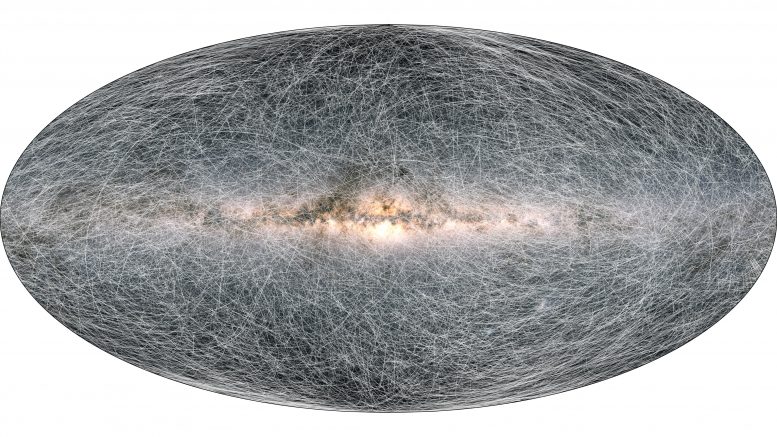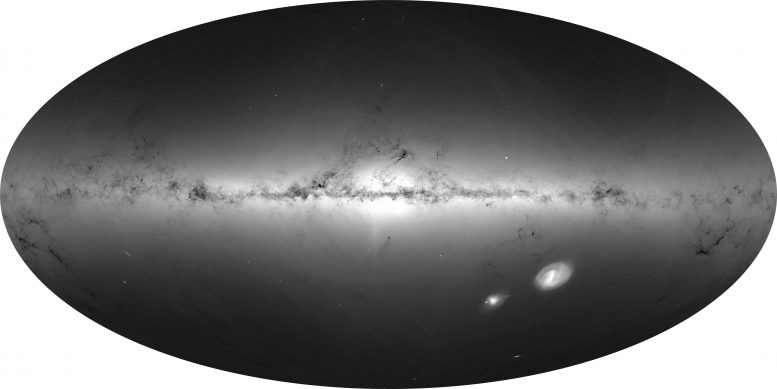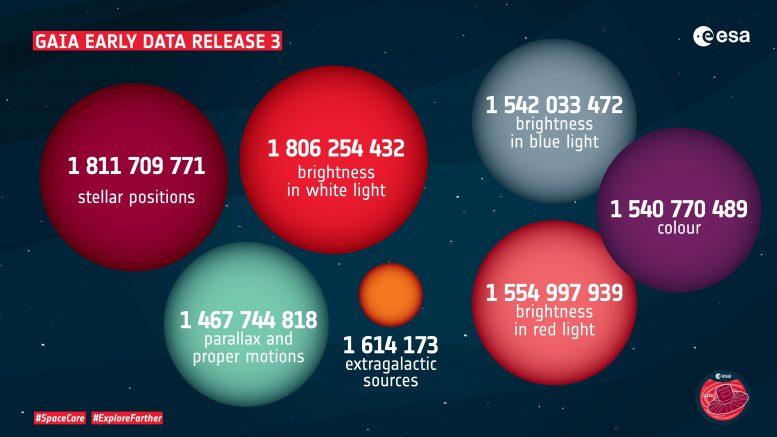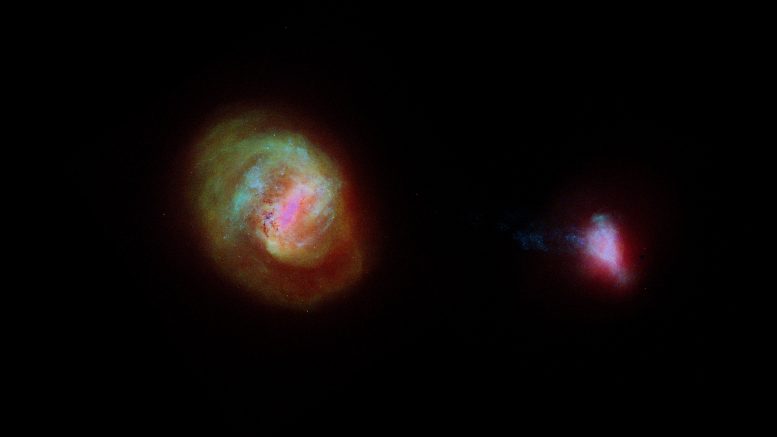Gaia’s New Detailed Data From More Than 1.8 Billion Stars

Gaia’s stellar motion for the next 400 thousand years. The stars are in constant motion. To the human eye this movement – known as proper motion – is imperceptible, but Gaia is measuring it with more and more precision. The trails on this image show how 40,000 stars, all located within 100 parsecs (326 light years) of the Solar System, will move across the sky in the next 400 thousand years. These proper motions are released as part of the Gaia Early Data Release 3 (Gaia EDR3). They are twice as precise as the proper motions released in the previous Gaia DR2. The increase in precision is because Gaia has now measured the stars more times and over a longer interval of time. This represents a major improvement in Gaia EDR3 with respect to Gaia DR2. Credit: ESA/Gaia/DPAC; CC BY-SA 3.0 IGO. Acknowledgement: A. Brown, S. Jordan, T. Roegiers, X. Luri, E. Masana, T. Prusti and A. Moitinho.
The motion of stars in the outskirts of our galaxy hints at significant changes in the history of the Milky Way. This and other equally fascinating results come from a set of papers that demonstrate the quality of ESA’s Gaia Early third Data Release (EDR3), which is made public on December 3, 2020.
Astronomers from the Gaia Data Processing and Analysis Consortium (DPAC) saw the evidence of the Milky Way’s past by looking at stars in the direction of the galaxy’s ‘anticenter.’ This is in the exact opposite direction on the sky from the center of the galaxy.
The results on the anticenter come from one of the four ‘demonstration papers’ released alongside the Gaia data. The others use Gaia data to provide a huge extension to the census of nearby stars, derive the shape of the Solar System’s orbit around the center of the galaxy, and probe structures in two nearby galaxies to the Milky Way. The papers are designed to highlight the improvements and quality of the newly published data.
What’s new in EDR3?
Gaia EDR3 contains detailed information on more than 1.8 billion sources, detected by the Gaia spacecraft. This represents an increase of more than 100 million sources over the previous data release (Gaia DR2), which was made public in April 2018. Gaia EDR3 also contains color information for around 1.5 billion sources, an increase of about 200 million sources over Gaia DR2. As well as including more sources, the general accuracy and precision of the measurements has also improved.
“The new Gaia data promise to be a treasure trove for astronomers,” says Jos de Bruijne, ESA’s Gaia Deputy Project Scientist.

Data from more than 1.8 billion stars have been used to create this map of the entire sky. It shows the total density of stars observed by ESA’s Gaia satellite and released as part of Gaia’s Early Data Release 3 (Gaia EDR3). Brighter regions indicate denser concentrations of stars, while darker regions correspond to patches of the sky where fewer stars are observed. In contrast to the brightness map in color which is enhanced by the brightest and most massive stars, this view shows the distribution of all stars, including faint and distant ones. The bright horizontal structure that dominates the image is the plane of the galaxy. It is a flattened disc that hosts most of our galaxy’s stars. The bulge in the center of the image is surrounding the center of the galaxy. Credit: ESA/Gaia/DPAC; CC BY-SA 3.0 IGO. Acknowledgement: A. Moitinho and M. Barros
To the galactic anticenter
The new Gaia data have allowed astronomers to trace the various populations of older and younger stars out towards the very edge of our galaxy – the galactic anticenter. Computer models predicted that the disc of the Milky Way will grow larger with time as new stars are born. The new data allow us to see the relics of the 10 billion-year-old ancient disc and so determine its smaller extent compared to the Milky Way’s current disc size.
The new data from these outer regions also strengthen the evidence for another major event in the more recent past of the galaxy.
The data show that in the outer regions of the disc there is a component of slow-moving stars above the plane of our galaxy that are heading downwards towards the plane, and a component of fast-moving stars below the plane that are moving upwards. This extraordinary pattern had not been anticipated before. It could be the result of the near-collision between the Milky Way and the Sagittarius dwarf galaxy that took place in our galaxy’s more recent past.
The Sagittarius dwarf galaxy contains a few tens of millions of stars and is currently in the process of being cannibalized by the Milky Way. Its last close pass to our galaxy was not a direct hit, but this would have been enough so that its gravity perturbed some stars in our galaxy like a stone dropping into water.
Read More:Gaia’s New Detailed Data From More Than 1.8 Billion Stars


